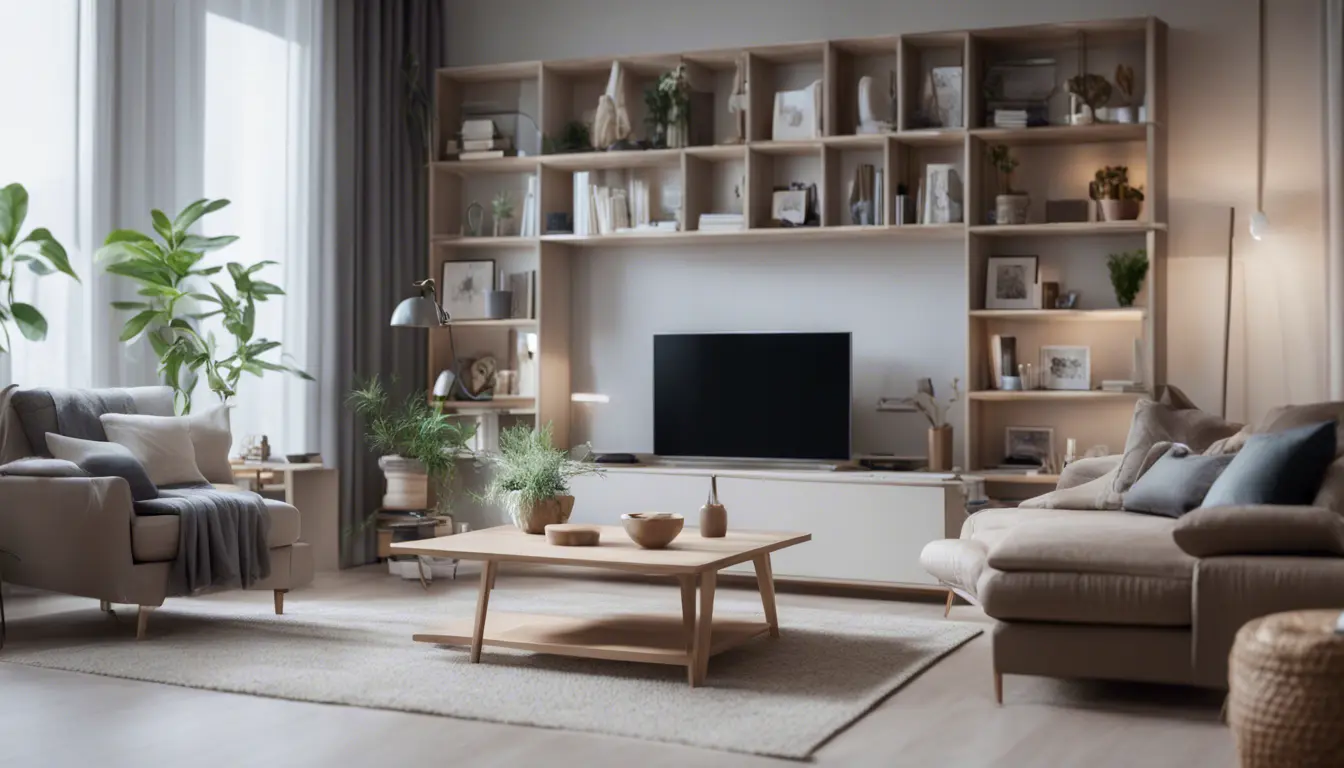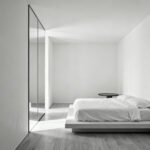Living in a small space doesn’t mean sacrificing style and functionality. As a home decorator, I’ve learned about making the most of limited square footage. Some of my most rewarding design projects have involved transforming tiny living rooms into cozy, welcoming spaces.
Do you struggle to fit all your furniture and decor into a cramped living room? Are you tired of feeling like your space is closing in on you? Well, you’re not alone. According to the U.S. Census Bureau, 34% of households in the U.S. live in units smaller than 1,000 square feet. And the trend towards smaller, more efficient living spaces is only growing, with 45% of new single-family homes being smaller than 2,000 square feet in 2019.
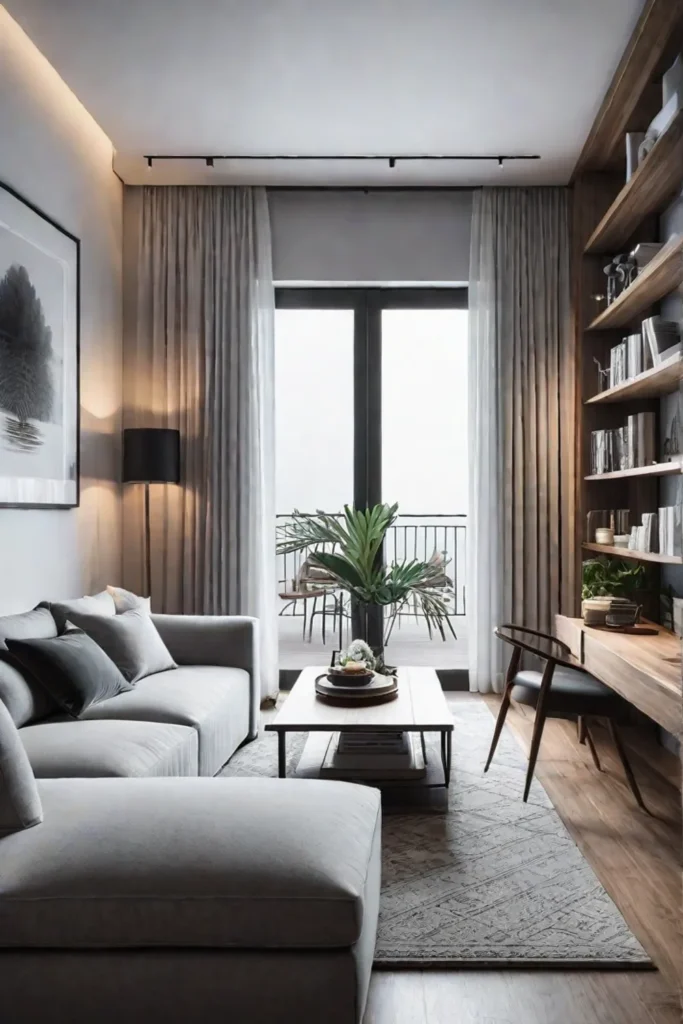
But fear not, my fellow tiny living room dwellers! In this article, I will share seven layout tricks and design strategies to help you make the most of your small living space. From furniture arrangement and multi-functional pieces to optical illusions and vertical space maximization, we will transform your cramped living room into a stylish, functional oasis. Let’s get started!
Furniture Arrangement
Furniture placement is crucial in a small living room. The right arrangement can make the space more open and inviting, while the wrong choices can make it feel cluttered and cramped. When arranging furniture in a tiny living room, the key is to avoid large, bulky pieces and instead choose items that fit the room’s scale.
One clever trick is to experiment with angled furniture. Placing your sofa or armchair at an angle can make the room appear larger by drawing the eye toward the corners. It creates a sense of visual interest and depth that can be lacking in a more traditional, linear layout.

Another way to maximize space is to utilize vertical storage. Tall, slim bookcases or shelves can visually elongate the walls, giving the illusion of a bigger room. Try an L-shaped sofa arrangement, which can maximize seating while leaving the center of the room open. You can even place a console table behind the sofa to create a defined entryway without taking up too much floor space.
Multi-Functional Furniture
When you’re dealing with a small living room, every inch counts. That’s why incorporating multi-functional furniture is such a game-changer. These pieces can serve multiple purposes: storage, seating, and versatility.
For example, an ottoman with hidden compartments can double as a coffee table and extra seating. A coffee table with built-in shelves or drawers can keep your living room clutter-free by providing concealed storage. A sofa with a built-in chaise or recliner can offer additional relaxation options without taking up extra floor space.
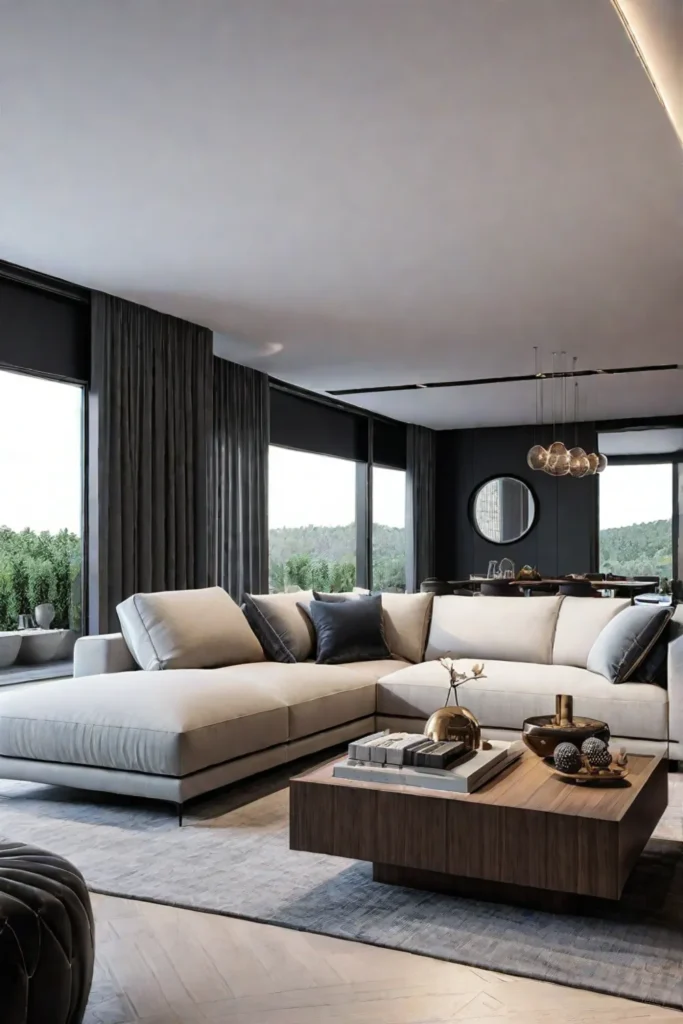
One of my favorite multi-functional pieces is a daybed. During the day, it can function as a comfortable sofa, and at night, it easily converts into a guest bed. This type of convertible furniture is perfect for small living rooms where you need to maximize every square foot.
Space-Saving Tips
Making the most of your available space in a tiny living room is crucial. Luckily, there are several clever strategies for creating the illusion of a larger, more open room.
One of my top tips is to utilize wall space. Install floating shelves or wall-mounted storage solutions to keep items off the floor and draw the eye upwards, creating the perception of more square footage. You can also choose furniture with legs, which gives the impression of a more spacious room by allowing you to see the floor underneath.
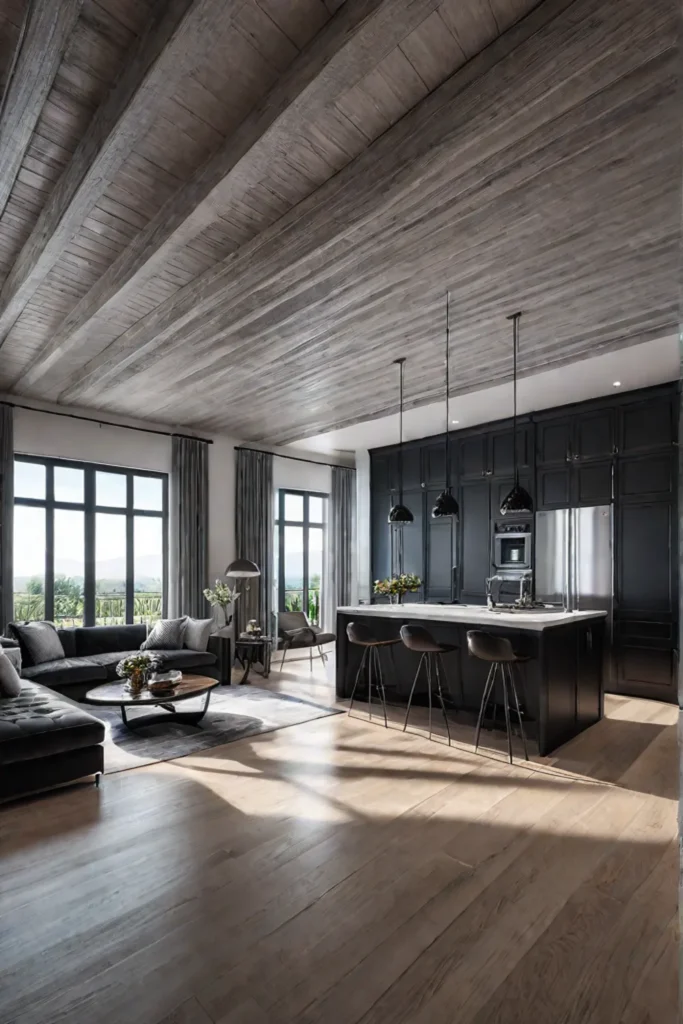
Another space-saving trick is to opt for transparent or glass pieces, like a glass-topped coffee table. These items maintain an open, airy feel and don’t visually clutter the space. And don’t forget to mount your TV on the wall – this frees up valuable surface space for other decor or storage.
Optical Illusions
Incorporating optical illusions is a brilliant way to make a small living room feel more expansive. By strategically using mirrors, patterns, textures, and colors, you can create the perception of depth and space.
Mirrors are a classic trick for making a room appear larger. Hang a large mirror across from a window to reflect light and create the illusion of depth. You can also play with bold, high-contrast accents, like vertical stripes or pops of color, to draw the eye around the room and make it feel more open.
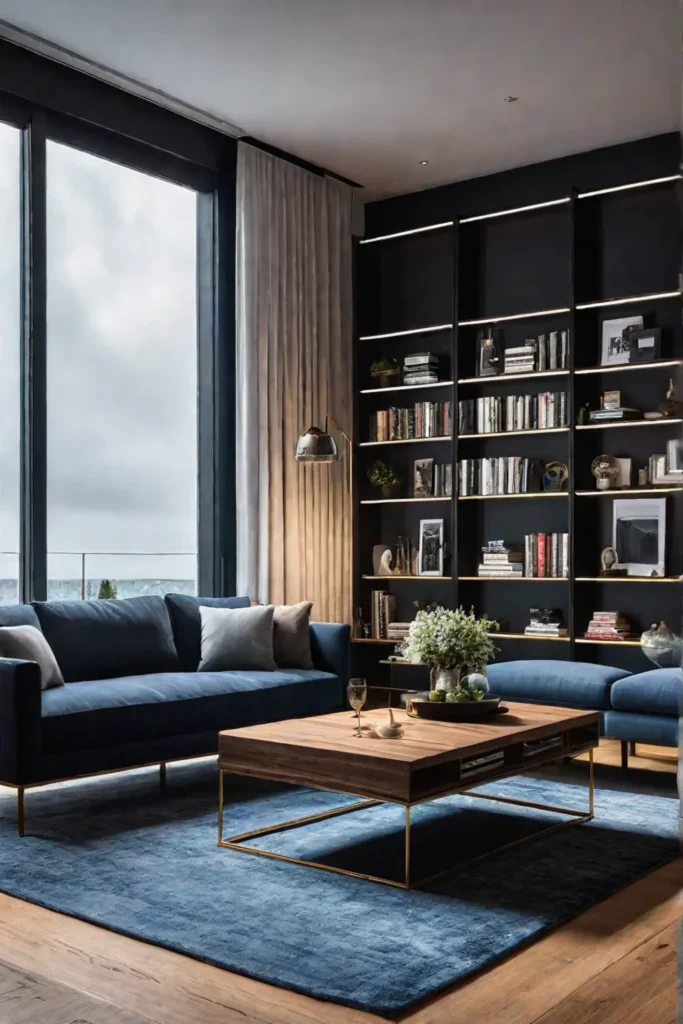
Another optical illusion that works wonders in small spaces is patterns. Opt for textiles and wallpapers with vertical stripes or geometric designs, as these can create the illusion of taller ceilings. Just be sure to balance these bold patterns with neutral, calming elements to avoid overwhelming the room.
Lighting Tricks
Proper lighting is crucial in a small living room, as it can dramatically impact the perception of space. Incorporating multiple light sources and strategic placement can make your tiny living room feel brighter, airier, and more inviting.
Start by using a combination of task lighting, ambient lighting, and accent lighting. This layered approach creates depth and dimension, making the room appear more spacious. Wall-mounted sconces or slim pendant lights are great options for task lighting, as they free up valuable floor space compared to bulky floor lamps.

Remember to install a dimmer switch, too. This allows you to adjust the lighting for different activities and moods, from cozy movie nights to lively gatherings. Consider using light-colored curtains or blinds to maximize the natural light filtering into the room.
Zoning and Separation
In a small living room, creating defined zones and separate spaces is essential to maintaining functionality and flow. Area rugs are a fantastic tool for this, as they can anchor different seating or activity areas and help visually divide the room.
Furniture placement is also key. Arrange your pieces to create distinct zones, such as a cozy reading nook or a dedicated workspace. You can use a room divider, bookcase, or even curtains to physically and visually separate these areas, giving the illusion of a larger, more organized space.
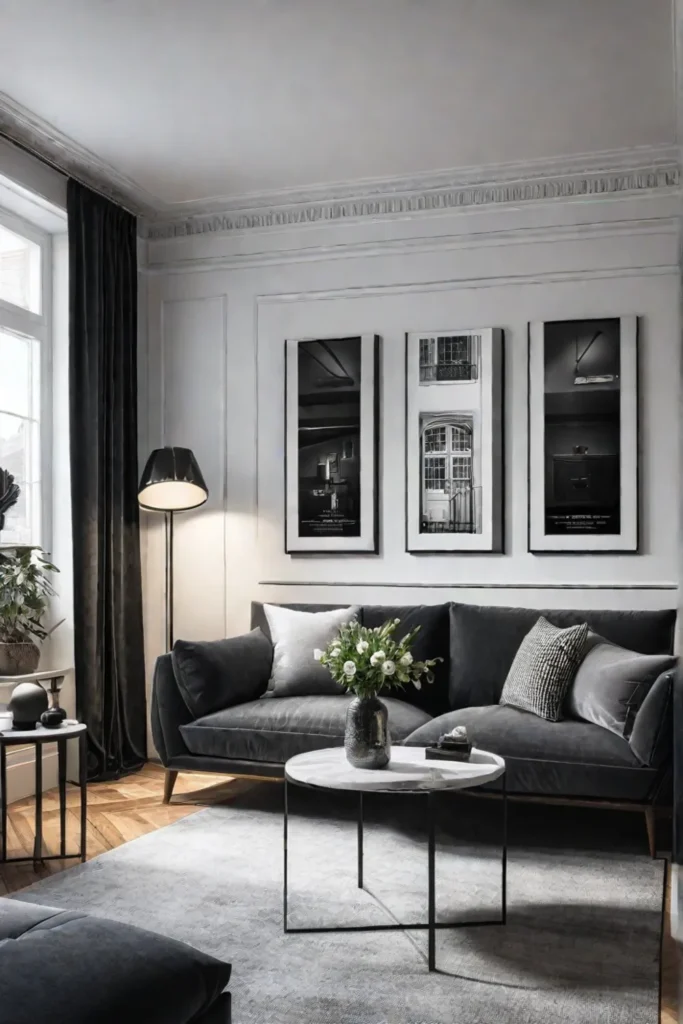
Don’t forget to maximize the use of corners, too. These often-overlooked spaces can be transformed into functional zones, like a small desk or a cozy chair for reading. By incorporating multi-purpose furniture, you can further enhance the versatility of your tiny living room.
Maximizing Vertical Space
Making the most of your vertical space is crucial in a small living room. By drawing the eye upwards, you can create the illusion of a larger, more open room.
One of the best ways to do this is by installing floor-to-ceiling bookcases or shelves. These tall, slender storage solutions visually elongate the walls and provide ample space for displaying decor and storing essentials. Hang your curtains above the windows, too, as this can create the illusion of taller ceilings.
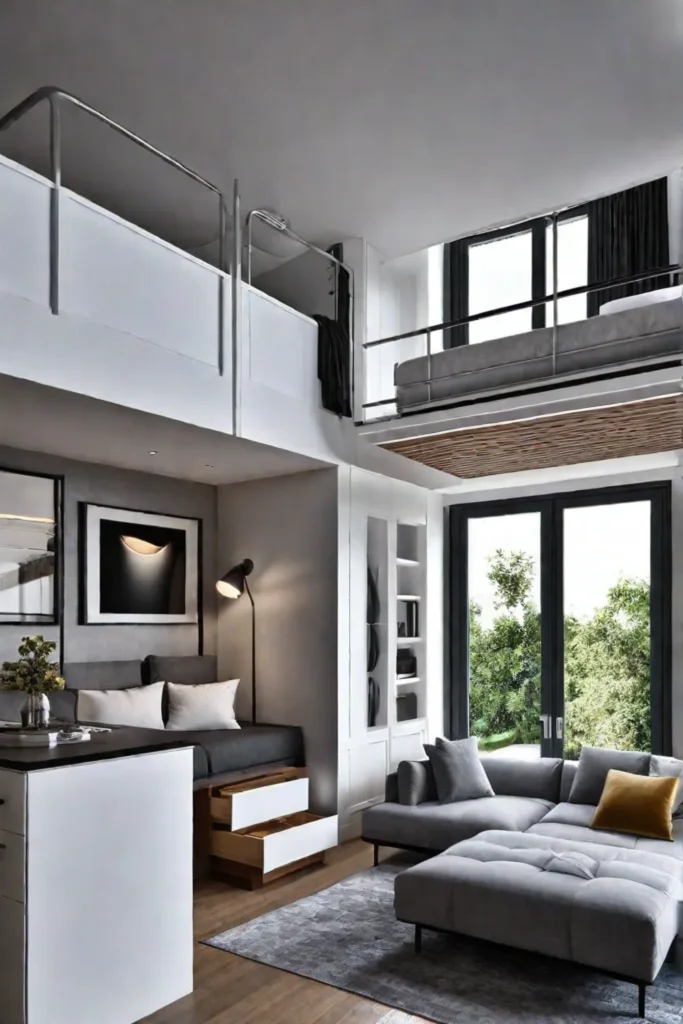
When it comes to furniture, opt for tall, slim pieces that don’t visually clutter the space. For example, a tall, narrow console table can replace a bulky TV stand and free up floor space. You can also utilize wall-mounted storage solutions to keep items off the floor and draw the eye upwards.
Conclusion
In a tiny living room, smart design choices and strategic layout tricks can make a big difference in creating the illusion of a larger, more functional space. By focusing on furniture arrangement, multi-functional pieces, space-saving strategies, optical illusions, lighting, zoning, and vertical space maximization, you can transform your cramped living room into a cozy, inviting, and highly practical area.
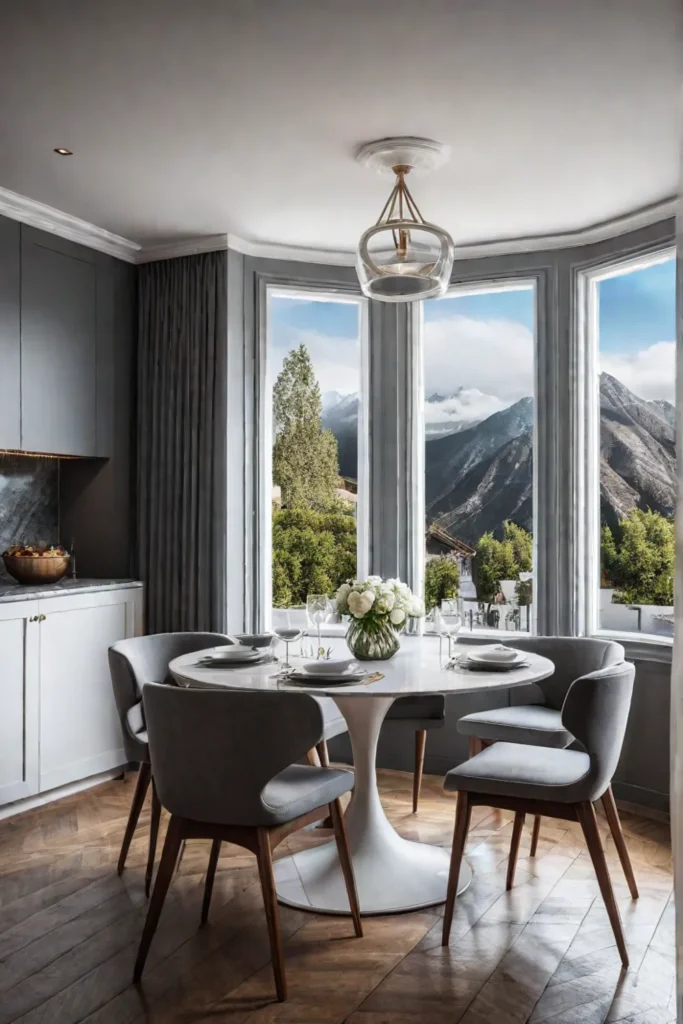
The right approach makes even the most compact living room feel spacious and well-designed. So, don’t be discouraged by your small square footage – embrace it and get creative! Your dream living room is just a few layout tweaks away.
